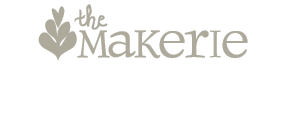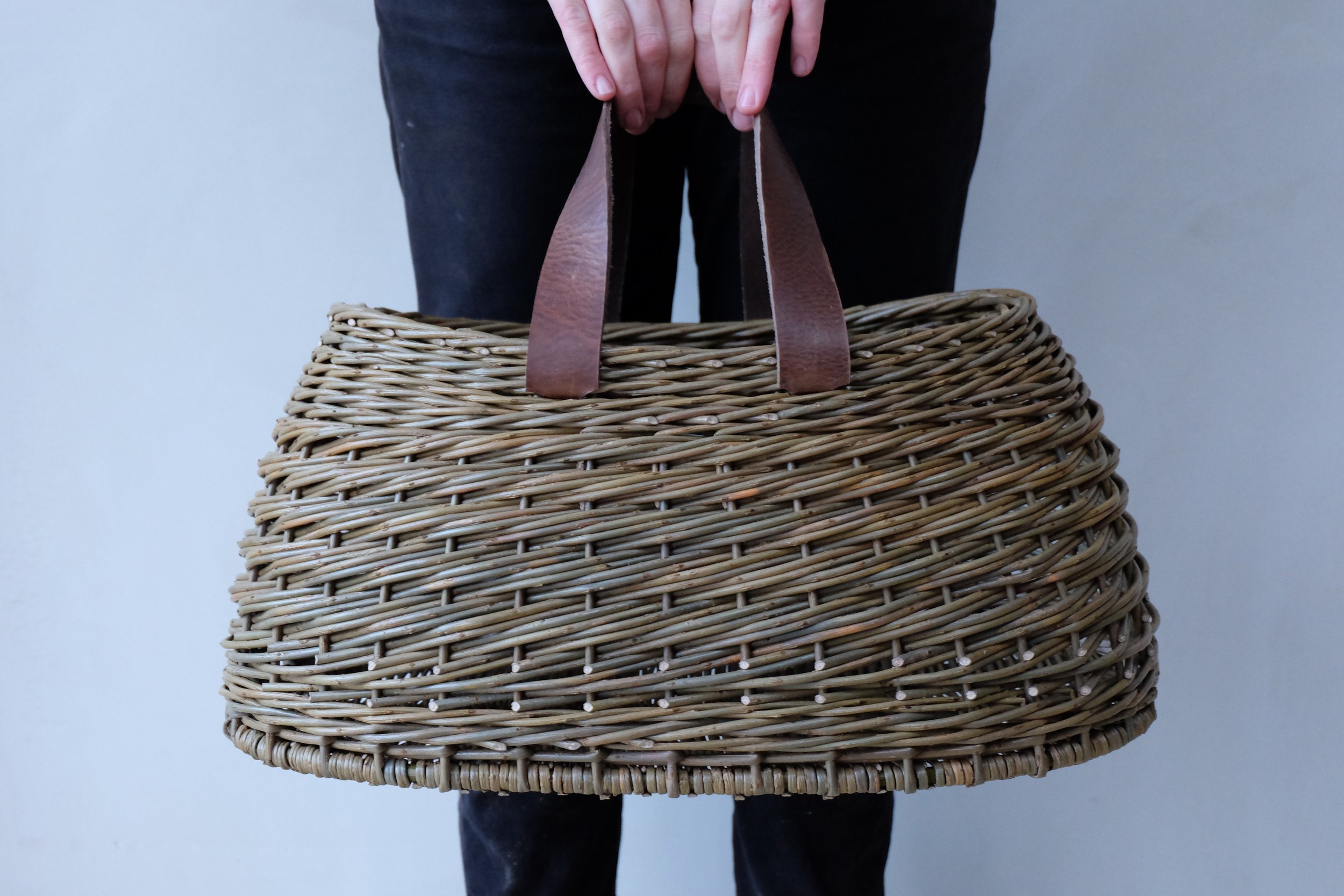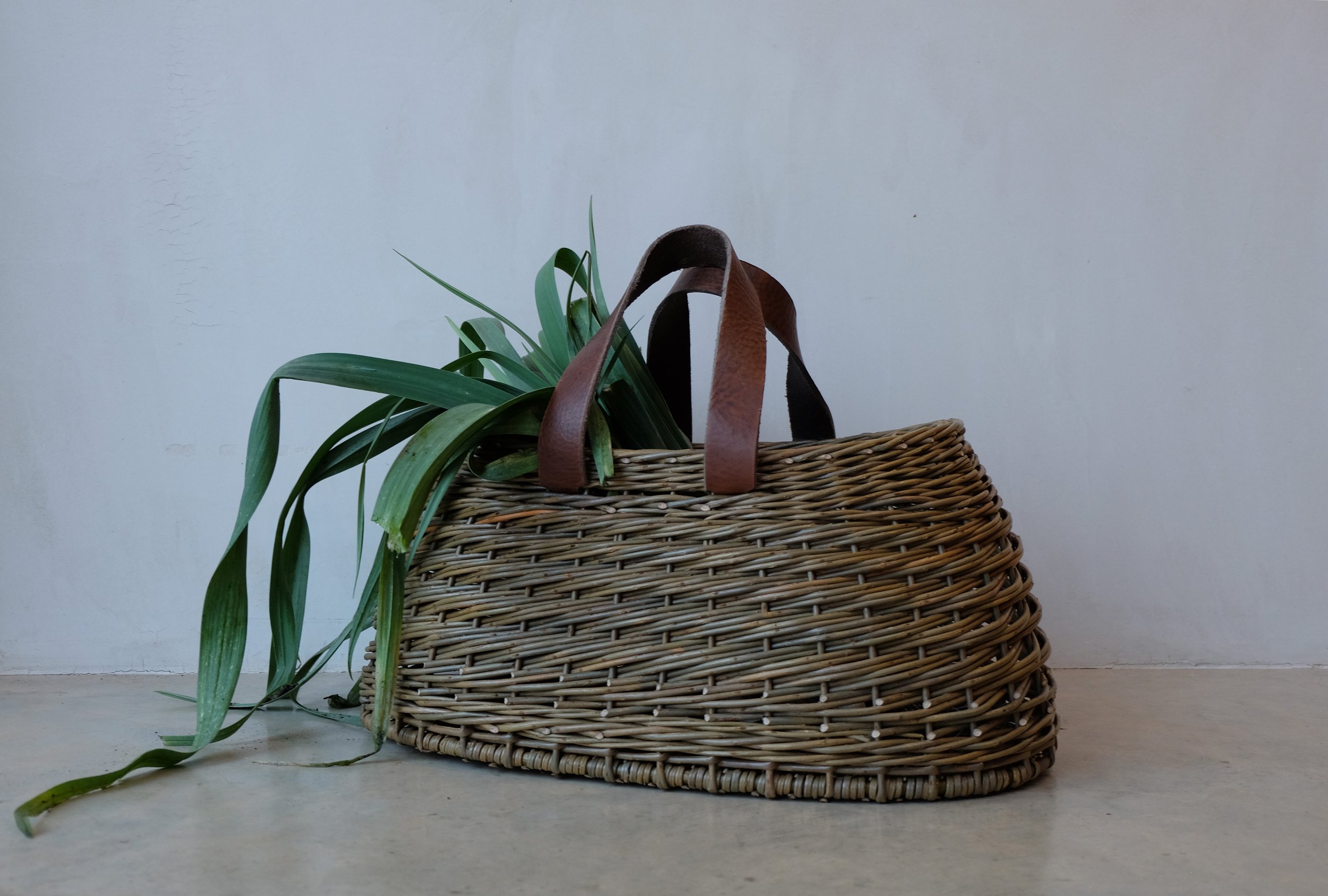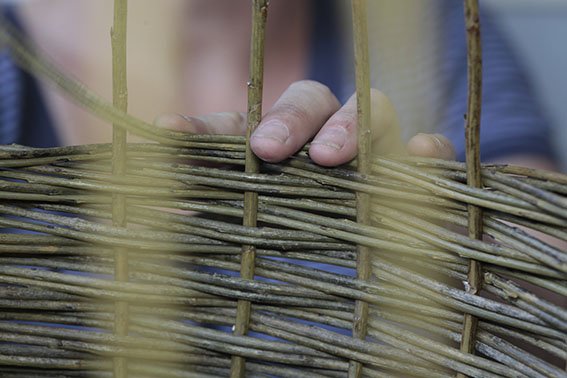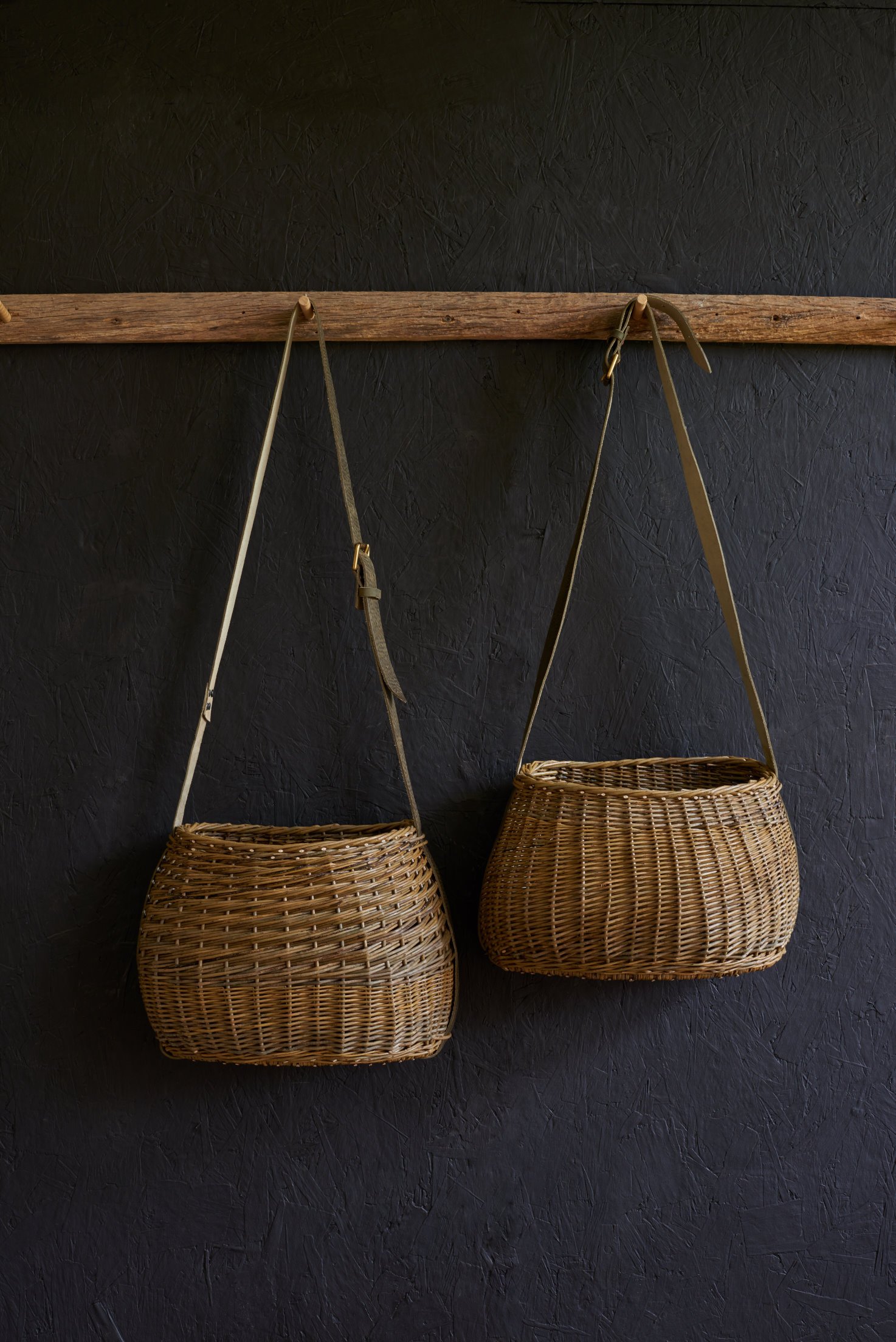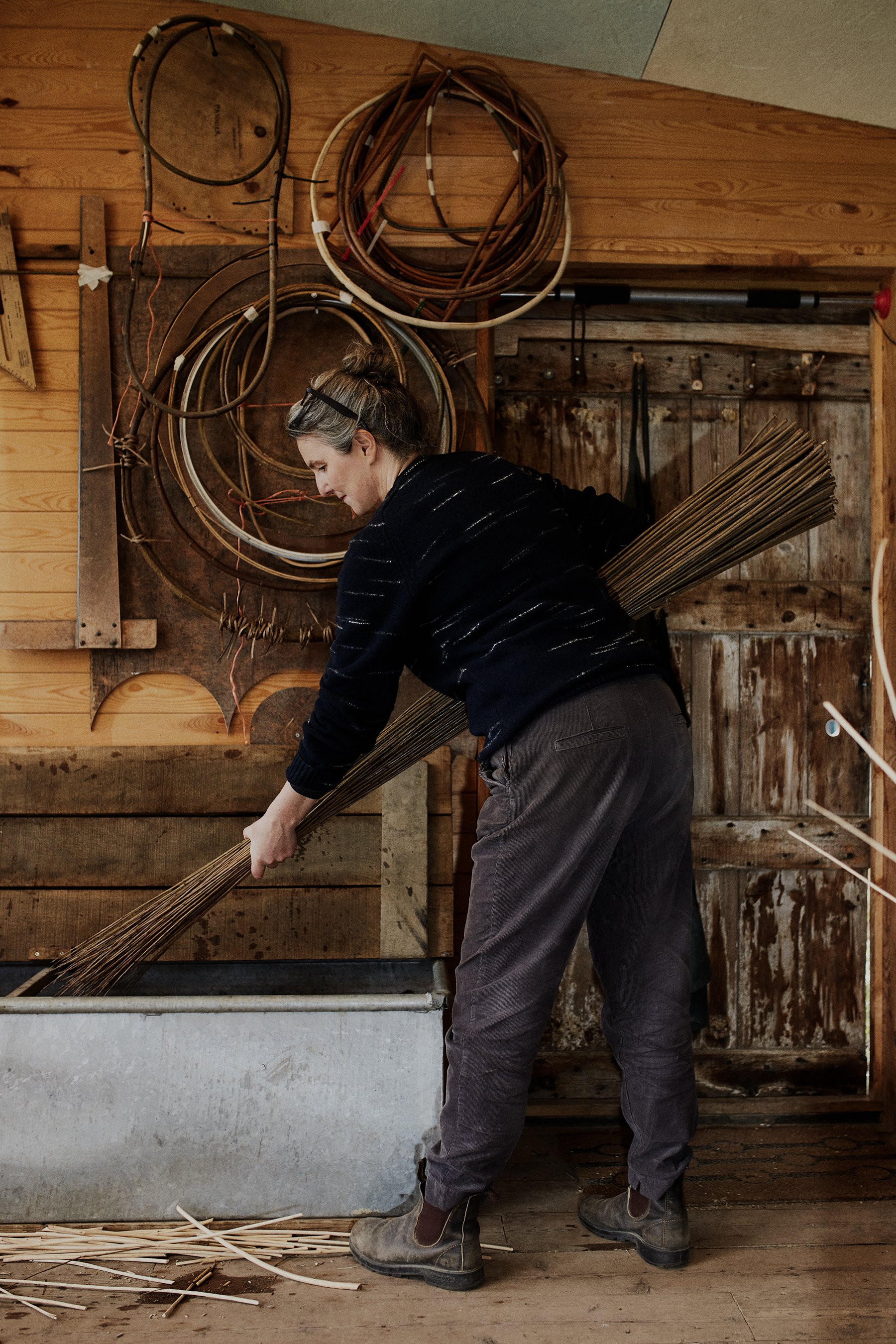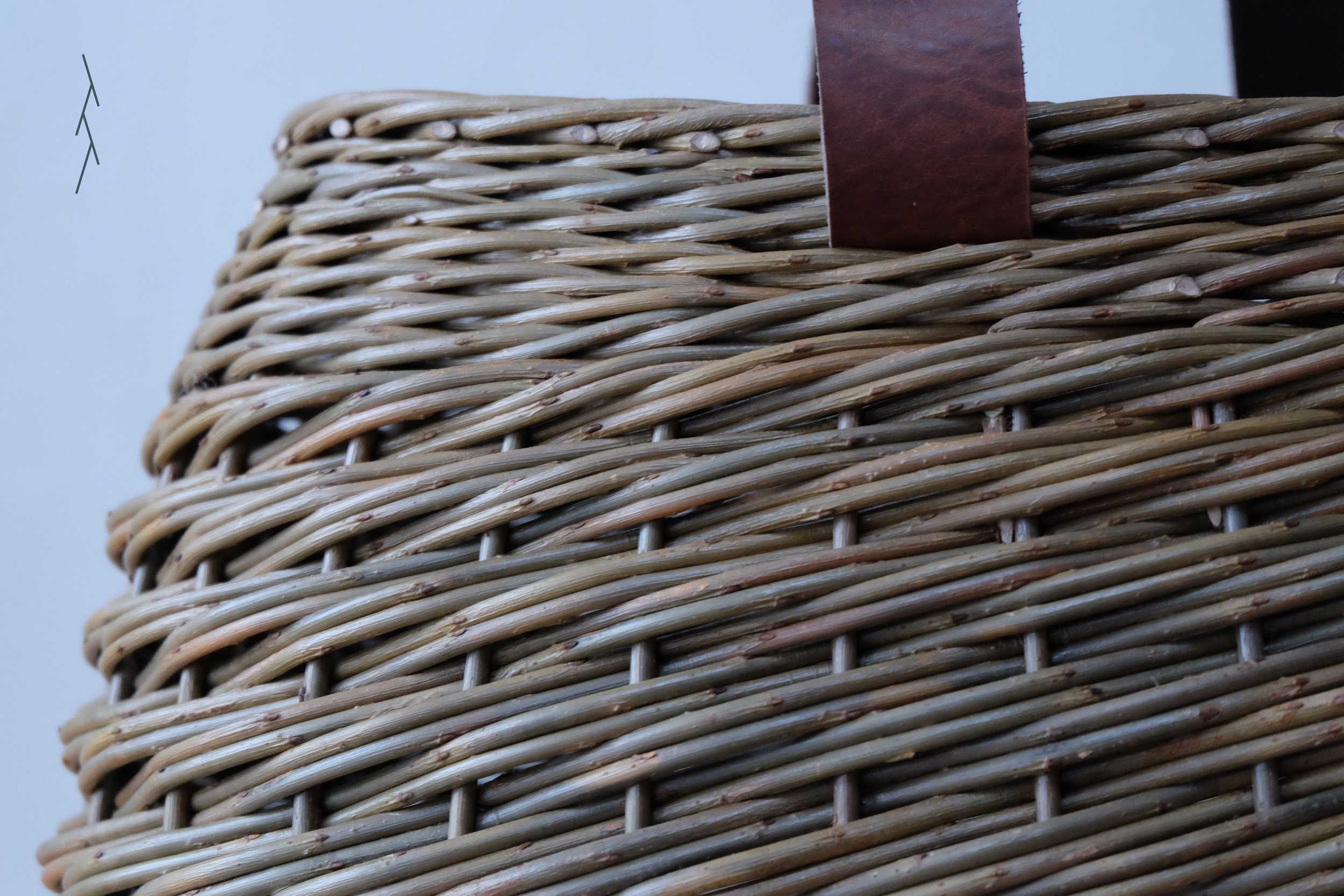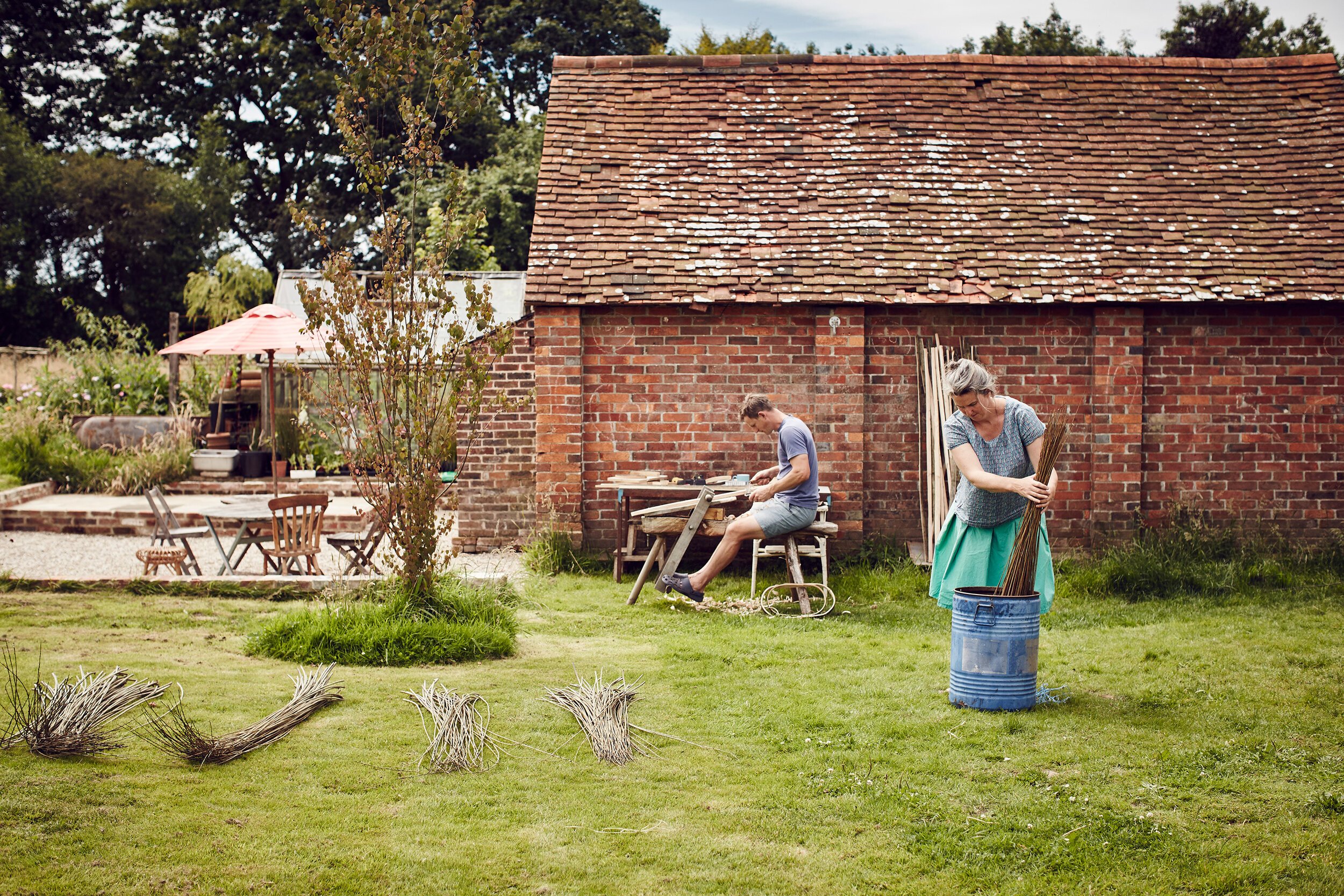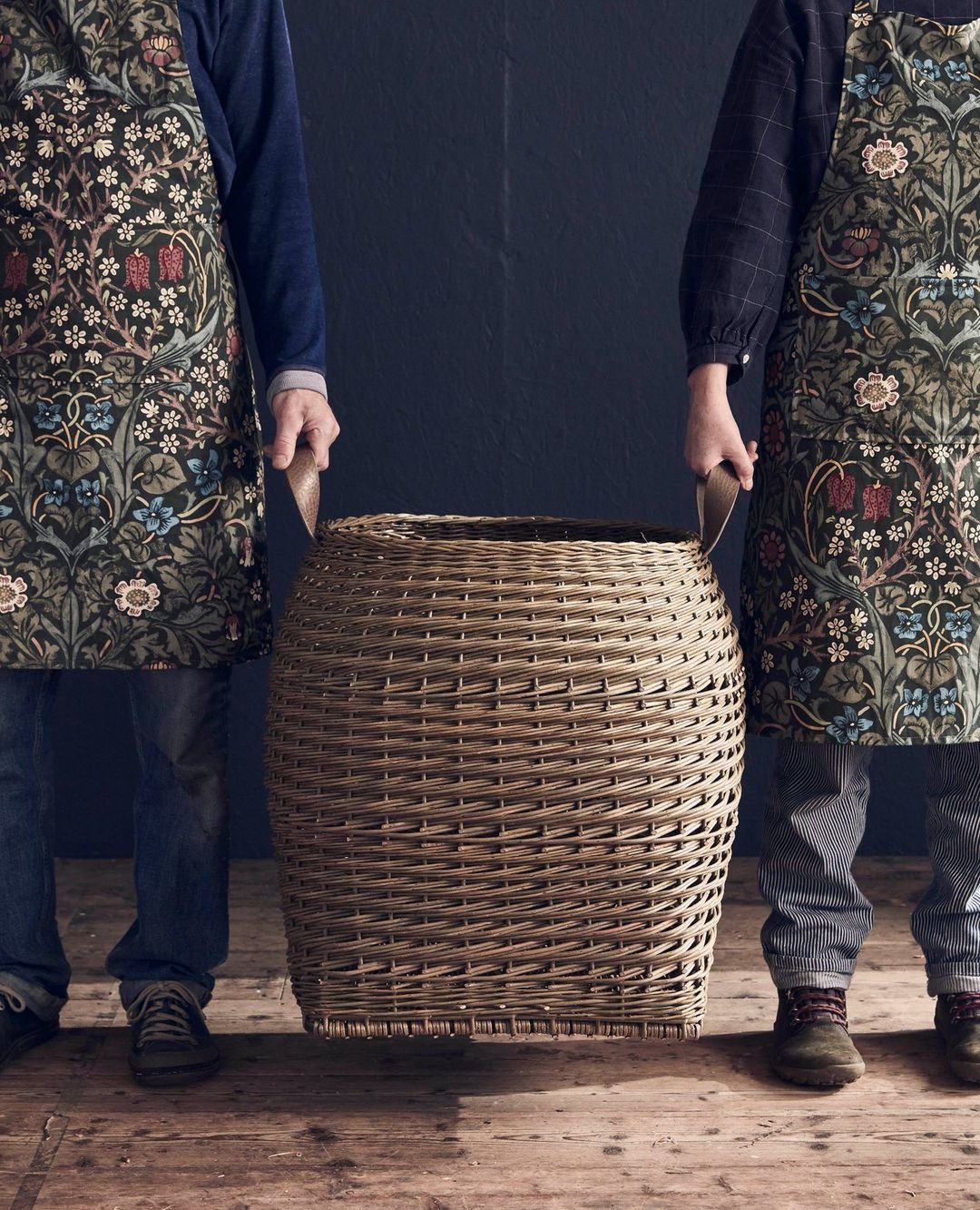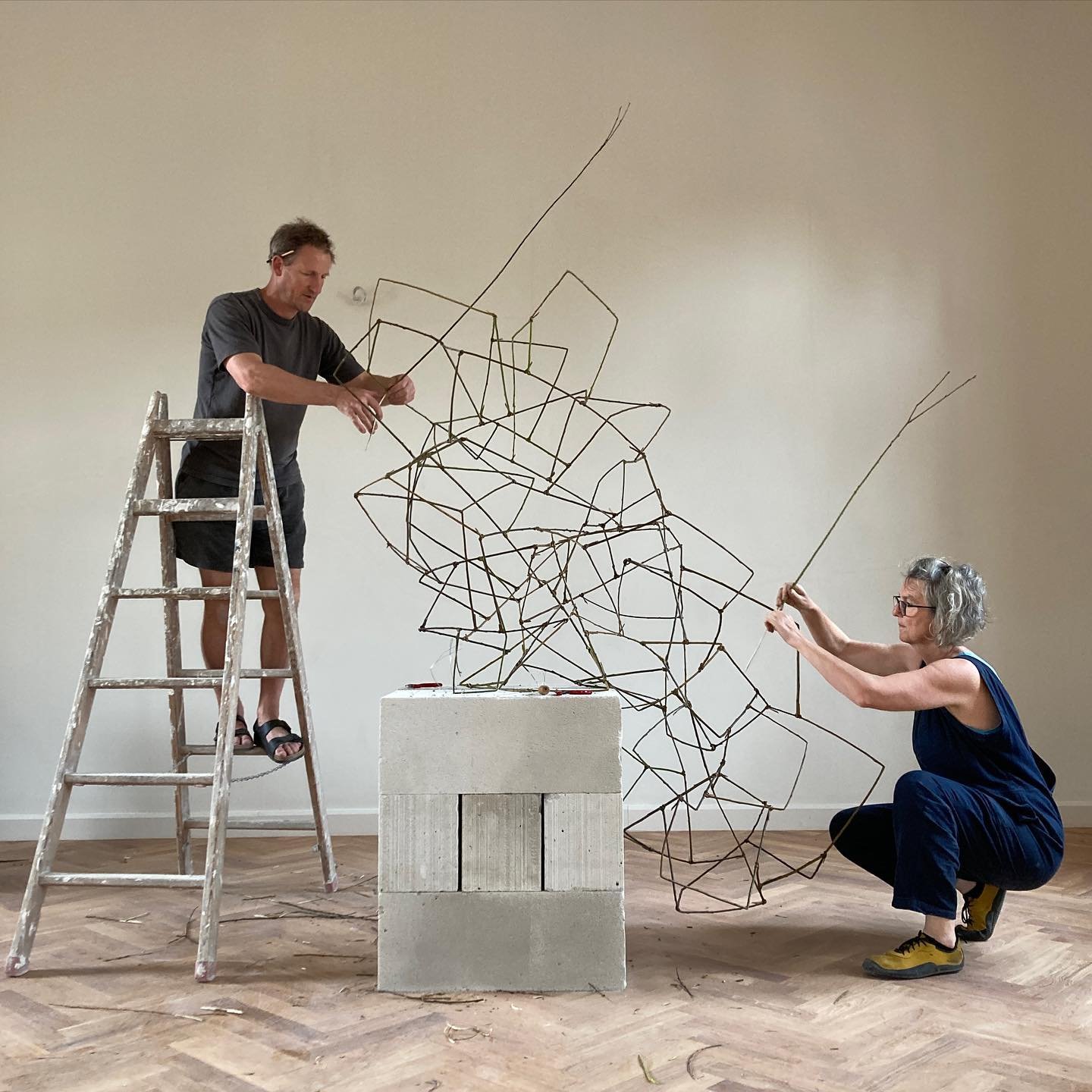market baskets and bags
WITH annemarie o’sullivan & tom mcwalter
workshop details
intermediate basket-making course
designed for 8 students
Working with willow, students will learn to make an attractive and strong market basket, perfect for gathering garden produce or doing some light shopping. This course will suit people who have some experience working with willow. The focus will be on the ‘scallom’, the cut used for attaching stakes to the base and making a good border. It will involve time refining knife skills.
We’ll start the ball rolling by weaving the base of the basket onto a pre-prepared hoop. You’ll choose between two different systems in order to weave the base evenly. We’ll be looking for elegant turns around the edge of the hoop.
Once the base is made you’ll learn to scallom using a knife and a single rod of willow. A scallom is a method of taking away part of the butt end of the willow rod, in order to create a thin section. This will allow you to tie the willow rod onto the base hoop. It is a more advanced basketry technique that requires real focus and previous experience with a knife. This process will be done slowly and there will be lots of help available from Annemarie and Tom.
Annemarie will demonstrate the attachment of the scalloms as many times as needed. We’ll encourage you to perfect your technique so you will be able to make easy scalloms at home. Once the scalloms or side stakes are attached, you’ll weave the sides of the basket with a French rand. You’ll make a strong rod border. Tom will guide you through the process of preparing and finishing leather straps for attachment.
Once your market basket is complete and you have added your leather straps, more advanced makers can try making a willow bag or a fitched basket. You’ll have the chance to weave this second basket with an English rand.
WHAT YOU WILL LEARN:
How to prepare and select willow for weaving
How to make an oval base on a hoop
How to cut and attach ‘scalloms’
How to shave scalloms using a fixed knife position
How to weave a double French rand
How to weave an English rand
How to finish a basket by making a sturdy rod border
How to prepare, finish, and attach leather handles
If time permits, advanced students may learn to fitch, a challenging technique, used in openwork baskets.
IN THE WORKSHOP SPACE:
Please wear practical clothes, ideally trousers. Covered shoes, no sandals please.
We ask students to ensure that the willow bundles are tidied regularly as the willow is selected. We need to ensure that the willow is kept in an ambient state throughout the retreat days. Guidance will be given on how we can do this together.
Knives should be sheathed when not in use.
All tools should be put safely away when not in use.
Willow scraps and cuttings must be swept from the floor throughout each day to ensure that the working space is safe.
In an effort to create a sacred space for creativity and for our imaginations to emerge, we are highly encouraging students to leave their mobile phones behind and off during the retreat and to use them at the end of each day to record any parts of the process.
MATERIALS PROVIDED:
All weaving materials provided
Students will take home Annemarie’s favorite basket-making tools from England (1 bodkin, 1 side cutter); cows horn, sheep wool and tallow from US; pre-made hoops for basket frames
WHAT TO BRING:
An open mind and heart
ANNEMARIE 0’SULLIVAN & TOM MCWALTER
Studio AMOS is the partnership between Tom McWalter and Annemarie O’Sullivan.
Using weaving and binding techniques, which have been used for thousands of years, Tom and Annemarie make baskets, lighting, and woven objects, which are a response to the materials they gather from the land and waterways. They are passionate about seeing the making through from source to the finished piece. They grow more than twenty varieties of willow which they harvest in January every year.
Their work draws on the curves of the landscape and a deep respect for ancient crafts. They are inspired by the simple connections they have with basket-makers and weavers from the past who grew and harvested their material as they do today.
Their connection with nature draws us to site-specific, beautifully crafted works, which are steeped in history, landscape, and beauty.
They work with a small team of skilled makers in their home studio in East Sussex in the UK.
